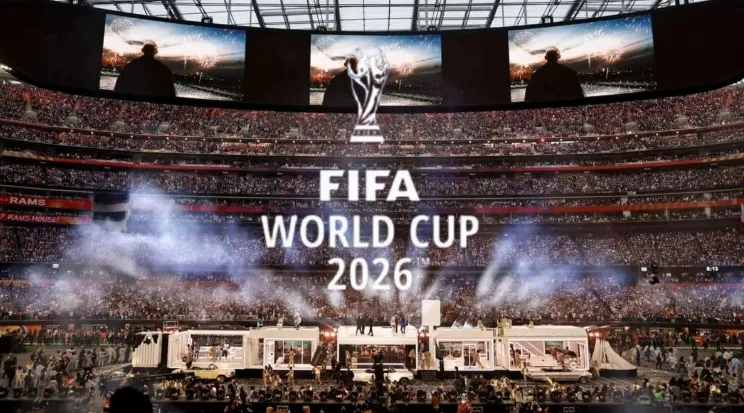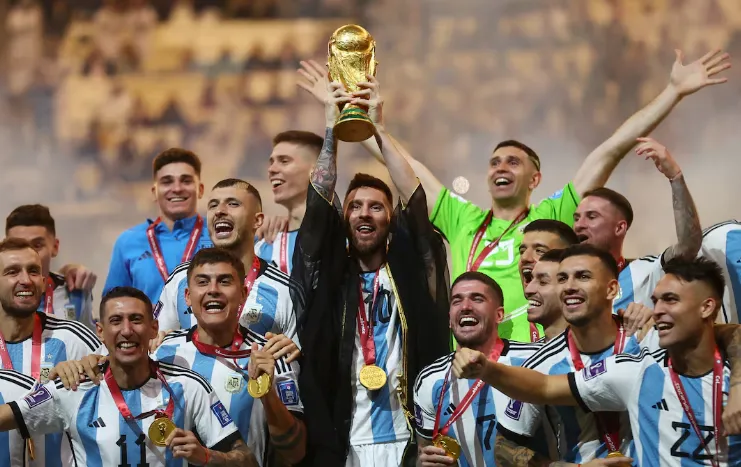The 2026 FIFA World Cup promises to be a landmark event, building on decades of football history. As fans eagerly anticipate the tournament, it’s fascinating to compare it with previous editions to see how the game has evolved. From team dynamics to tactical innovations and fan experiences, understanding what to expect offers a glimpse into the future of football while honoring the legacy of past World Cups.
Evolution Of The World Cup Over The Years

The FIFA World Cup has undergone remarkable transformation since its inception in 1930. Initially featuring only 13 teams, the tournament has expanded significantly over the decades, reflecting the growing global appeal of football. Each edition brought not only more teams but also refinements in format, from simple knockout rounds to the intricate group stages and round-of-16 matches we see today. With the 2026 World Cup set to feature 48 teams, fans can expect a broader and more competitive tournament than ever before.
Technological advancements have also shaped the modern World Cup. Innovations such as goal-line technology and VAR (Video Assistant Referee) have revolutionized match officiating, ensuring fairness and precision. Teams now leverage sophisticated data analytics and performance tracking to gain a tactical edge, making matches more strategically intense. Fans can follow every moment of these high-stakes encounters, whether at the stadium or through platforms like Cakhiatv HD football stream, which offers high-quality live broadcasts of every game.
Media coverage has evolved alongside the tournament itself. Whereas early World Cups relied heavily on radio and limited television broadcasts, today’s audiences enjoy global live coverage, on-demand replays, and in-depth analysis via social media. This transformation has not only increased the sport’s reach but also allowed fans worldwide to engage with the tournament in real time, creating a shared global experience.
Overall, the evolution of the World Cup reflects broader trends in football, from expanding participation and technological integration to enhanced fan engagement. As 2026 approaches, understanding these changes provides context for what fans can expect, blending the rich history of past tournaments with innovations that promise to make the upcoming World Cup a truly unforgettable event.
Comparing Team Dynamics And Playing Styles

As the 2026 World Cup approaches, examining team dynamics and playing styles offers valuable insight into how football has evolved. From tactical innovations to the rise of emerging nations and star players, understanding these elements helps fans anticipate which teams may excel and how matches could unfold on the global stage.
Tactical Evolution From Past To Present
Over the decades, World Cup tactics have evolved dramatically. Early tournaments emphasized individual brilliance and basic formations, while modern teams focus on structured strategies, pressing systems, and positional play. Managers now employ complex formations that adapt to opponents’ strengths and weaknesses, blending defensive solidity with attacking creativity. This evolution highlights the strategic depth of contemporary football, making each match a tactical chess game.
Emerging Football Nations
The 2026 World Cup is expected to showcase not only traditional powerhouses but also emerging football nations eager to make their mark. Countries that previously struggled on the global stage have invested in youth development and infrastructure, producing technically skilled players capable of competing at the highest level. These underdog teams can disrupt established hierarchies, creating unpredictability and excitement. Analysts often highlight these potential surprises in previews, such as an expert match preview by Mai Chau, offering insights into how lesser-known squads could impact the tournament.
Key Players To Watch In 2026
Player dynamics have also shifted, with squads increasingly relying on versatile athletes who can perform multiple roles on the pitch. Star forwards, midfield maestros, and reliable defenders contribute not just individually but as part of a cohesive system. The interplay between experienced veterans and rising talents often defines a team’s success. Understanding these dynamics is crucial for predicting match outcomes, as teams with strong chemistry and adaptability tend to outperform expectations.
What To Expect In World Cup 2026

The 2026 FIFA World Cup promises to be one of the most exciting tournaments in history. With the expansion to 48 teams, fans can expect a more diverse and competitive field, featuring traditional powerhouses alongside emerging football nations. This increase not only adds more matches but also creates opportunities for underdog teams to surprise the world, making every group stage game crucial.
One key expectation is the rise of tactical innovation. Managers are likely to employ flexible strategies, blending high pressing, counter-attacks, and possession-based play depending on opponents. Teams will rely heavily on data analytics and performance tracking to gain marginal advantages, ensuring that games are both strategically rich and intensely competitive. Fans following matches can look forward to detailed insights, with platforms offering expert commentary and predictions to enhance the viewing experience.
Player dynamics will also play a pivotal role. Expect to see a mix of experienced veterans and emerging stars, each contributing to team cohesion and overall performance. Versatile players capable of adapting to multiple roles will be invaluable, particularly in the long, demanding schedule of a 48-team tournament. Key individuals could define their legacies, much like past World Cup legends, while new stars emerge on the global stage.
Off the field, technological advancements and fan engagement are set to redefine the tournament experience. From improved stadium facilities in host nations the United States, Canada, and Mexico to enhanced broadcasting options and interactive digital content, supporters worldwide will enjoy unprecedented access.
Conclusion
The 2026 World Cup promises to be a landmark event in football history, combining expanded participation, tactical innovations, and emerging talent. Fans can anticipate thrilling matches, surprising upsets, and memorable moments both on and off the pitch. By comparing past tournaments, it’s clear that the evolution of team dynamics, technology, and fan engagement will make this edition uniquely exciting. Ultimately, World Cup 2026 will celebrate football’s rich legacy while showcasing the sport’s future potential on a global stage.